The vast and vibrant world of the animal kingdom is an endless source of wonder. With millions of species around the globe, it’s no surprise that some of our favorite animals are those whose names start with the letter “N.” Dive into this meticulously curated list and discover the amazing creatures whose names grace this noble letter. Whether you’re a seasoned zoologist or a casual animal lover, this list is bound to offer some surprises!
1. Nase (Chondrostoma nasus)

- Habitat: European freshwater rivers
- Diet: Algae
The Nase, a smaller fish found in European rivers, is notable for its ability to adapt to different environments. The species is considered ‘lithophilic,’ meaning they are lovers of stony habitats.
These fish can be seen scraping algae off of stones in clear freshwater systems. What makes them particularly unique is the specialized shape of their mouths. They have a downward-bending snout, which makes it easy for them to feed on riverbeds.
2. Nalolo (Schilbe intermedius)
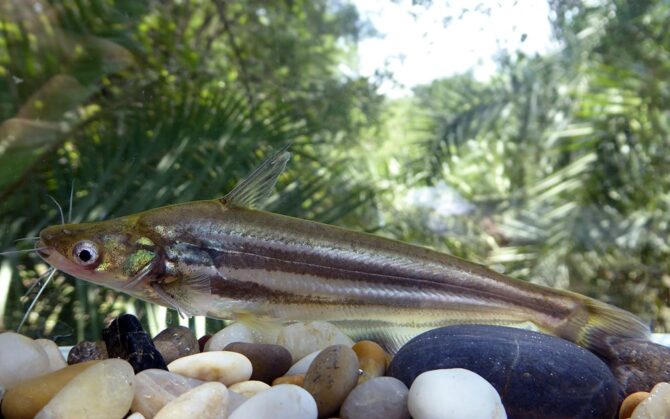
- Habitat: African freshwater rivers
- Diet: Smaller fish, crustaceans
The Nalolo, also known as the African Glass Catfish, is a stunning freshwater fish known for its partially transparent body. This unique feature allows observers to witness the internal organs, including its beating heart!
Found in various freshwater habitats across Africa, they usually form large schools, moving as a single entity, which can be a mesmerizing sight. Their transparency acts as camouflage, making it harder for predators to single out individual fish.
3. Nandu (Rhea americana)
- Habitat: South American grasslands
- Diet: Plants, seeds, insects, small vertebrates
The Nandu, more commonly referred to as the Greater Rhea, is the largest bird found in South America. It is considered one of the long neck animals with its neck and body being long around 127-140 cm. Unlike the ostrich, its African relative, the Nandu has a feathered neck. While it’s flightless, the Nandu can run at impressive speeds to escape predators.
Native peoples of South America have historically relied on the Nandu for food, feathers, and even eggs, which are notably large.
4. Nematode (Various species)
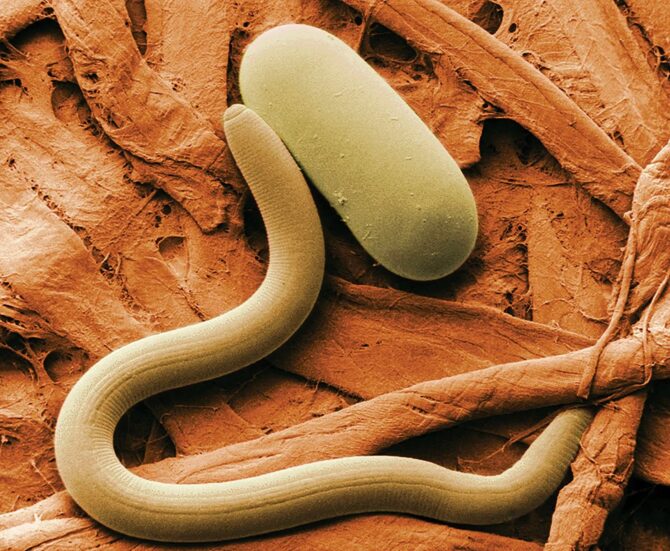
- Habitat: Virtually everywhere (soil, water, plants, animals)
- Diet: Depends on the species
Nematodes, or roundworms, comprise a staggering number of species. They’re found in almost every conceivable habitat on Earth. While many nematodes are beneficial, helping in soil aeration and nutrient cycling, some can cause diseases in plants, animals, and even humans.
Despite their tiny size, nematodes play a massive role in our planet’s ecosystems. These are scary micro animals that raccoons can infect humans with making them very dangerous in dominicam republic.
5. Nicator (Various species)
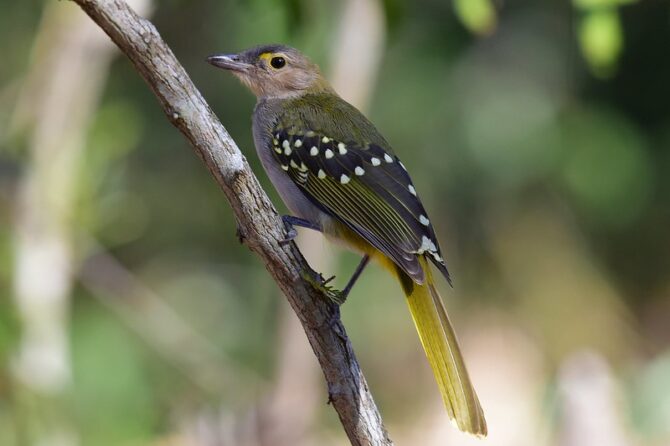
- Habitat: African forests
- Diet: Insects
Nicators are an often-overlooked group of songbirds found in Africa. They possess powerful voices that can fill a forest with their calls. With a diet mainly comprised of insects, nicators have strong legs and spend a considerable amount of time on the ground searching for food.
Their plumage ranges from grey to brown, making them blend seamlessly into the forest floor.
6. Naseem’s Salamander (Salamandrella naseema)
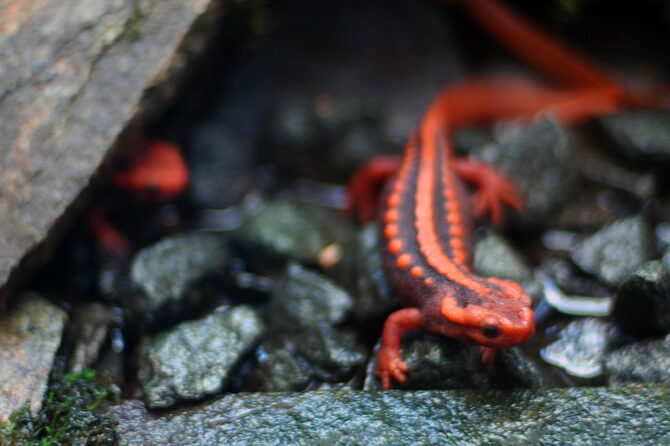
- Habitat: Southeast Asian forests
- Diet: Small insects
Named in honor of the renowned biologist Dr. Naseem Ahmad, this salamander is an exquisite find for herpetologists. With smooth skin and distinct patterns, it’s a delight to observe.
They prefer cooler habitats, often hiding under leaves or inside logs during the day. At night, they come out to hunt, primarily feeding on smaller insects.
7. Nightfish (Bostockia porosa)
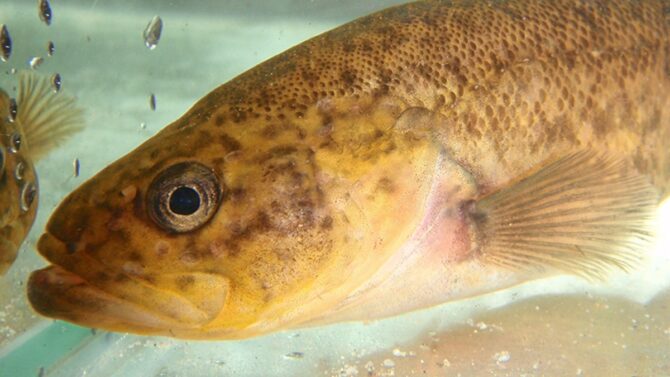
- Habitat: Australian freshwater rivers
- Diet: Smaller fish, insects
The Nightfish, native to Western Australia, gets its name from its nocturnal behavior. Preferring the cover of darkness, this fish is an active predator. Their elongated body and larger mouth are a testament to their predatory nature.
While not much is known about their reproductive behavior, they are a subject of interest for many ichthyologists.
8. Noodlefish (Various species)

- Habitat: Asian freshwater habitats
- Diet: Plankton
These slender, elongated fish, as their name suggests, resemble noodles. Found mainly in Asia, Noodlefish have tiny, almost non-existent scales, giving them a smooth appearance.
Primarily feeding on plankton, these fish have developed a unique feeding mechanism where they open their mouth and swim at slow speeds, filtering the water for their minuscule prey. They serve as food for frogs in the ecosystem.
9. Nicator Goby (Nematogobius maindroni)

- Habitat: Freshwater streams in Asia
- Diet: Algae, microscopic organisms
Not to be confused with the songbird Nicator, the Nicator Goby is a freshwater fish known for its vibrant colors and playful nature. Often kept in aquariums, they are a favorite among hobbyists.
What’s unique about these gobies is their ability to climb waterfalls using a specialized sucker on their bellies. This aids them in avoiding predators and accessing untouched feeding grounds.
10. Nutria (Myocastor coypus)
- Habitat: Wetlands, freshwater systems
- Diet: Aquatic plants
Nutria, also known as Coypu, are large rodents and they resemble beavers or large rats. Native to South America, they have been introduced to other parts of the world, sometimes becoming an invasive species.
They are semi-aquatic, possessing webbed feet perfect for swimming. While they might not be everyone’s favorite animal due to their rat-like appearance, they play a crucial role in controlling aquatic vegetation in their habitats.
11. Numbat (Myrmecobius fasciatus)
- Habitat: Australian woodlands
- Diet: Termites
A small, colorful marsupial, the Numbat stands out with its banded appearance. Unlike other marsupials, the Numbat has a specialized diet, feeding primarily on termites. Due to habitat destruction and introduced predators like foxes, Numbat populations have suffered.
Conservationists are making efforts to preserve and bolster their numbers in their native habitats.
12. Noodle Snake (Various species)

- Habitat: Tropical forests in Asia
- Diet: Small amphibians, insects
Despite its playful name, the Noodle Snake is a remarkable serpent with a body so slender that it looks like a moving noodle. Primarily nocturnal, these snakes traverse the forest floors in search of small prey.
Their slender bodies allow them to navigate through narrow spaces and crevices, making them elusive to spot in the wild.
13. Nighthawk (Chordeiles minor)

- Habitat: North and South America
- Diet: Flying insects
Not truly hawks, Nighthawks are named for their evening hunting habits. They have a distinctive “V” shaped white patch under their wings, making them identifiable in flight. Their wide mouths make it easy to scoop up flying insects during flight.
Often mistaken for bats due to their dusk and dawn activity, Nighthawks are fascinating birds with a mesmerizing flight pattern.
14. Newfypoo (Dog Breed)
- Habitat: Domestic
- Diet: Dog food varies based on dietary needs
The Newfypoo is a delightful mix between a Newfoundland and a Poodle. With the gentle nature of Newfoundland and the intelligence of the Poodle, this breed is quickly gaining popularity as a family pet.
They have curly to wavy fur, which can be hypoallergenic, making them suitable for families with allergy concerns. Their friendly demeanor makes them wonderful companions, especially for children.
15. Neddicky (Cisticola fulvicapilla)
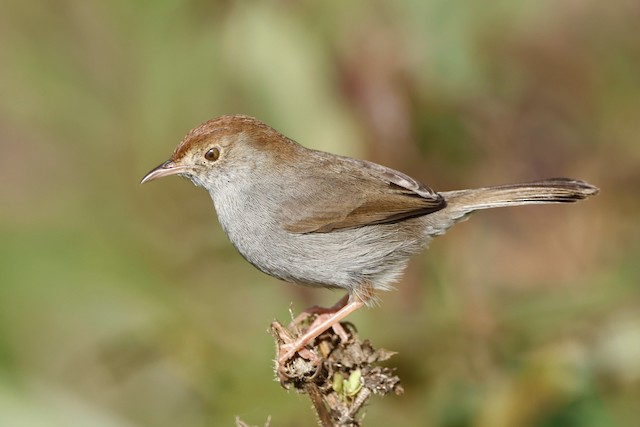
- Habitat: African savannas and grasslands
- Diet: Insects
Also known as the Piping Cisticola, the Neddicky is a small bird with a powerful voice. Its calls can be heard echoing across African plains, especially during mating seasons.
The beauty of this bird lies in its simplicity. With unassuming brown plumage, they might seem ordinary, but their vocal prowess makes them stand out in their habitat.
16. Noodle Eel (Various species)

- Habitat: Deep sea
- Diet: Smaller fish, crustaceans
The deep sea is home to many mysteries, and the Noodle Eel is one of them. With an elongated body resembling a noodle, this eel roams the deep waters in search of prey.
Their long, slender bodies are perfectly adapted for life in the vastness of the deep sea. Their existence is a testament to nature’s boundless creativity.
17. Northern Cardinal (Cardinalis cardinalis)
- Habitat: North America
- Diet: Seeds, insects
A popular bird in North America, the Northern Cardinal, with its bright red plumage and crest, is easy to spot. Both males and females sing, and their songs are a treat to the ears.
They are often seen in gardens, feasting on seeds. The males, with their fiery appearance, are more easily spotted, while females sport a brownish hue with hints of red.
18. Neotropic Cormorant (Phalacrocorax brasilianus)
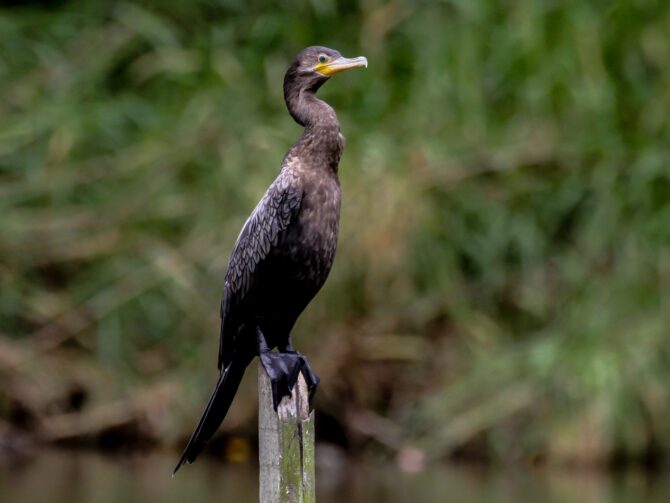
- Habitat: Freshwater habitats in the Americas
- Diet: Fish
Often spotted near freshwater lakes, rivers, and marshes in South America, the Neotropic Cormorant is an expert fisher. With a long neck and sharp beak, they dive underwater to catch their prey.
They are social birds, often seen resting on trees or electric wires in large groups. Their presence is indicative of a healthy aquatic ecosystem.
19. Naked Mole Rat (Heterocephalus glaber)
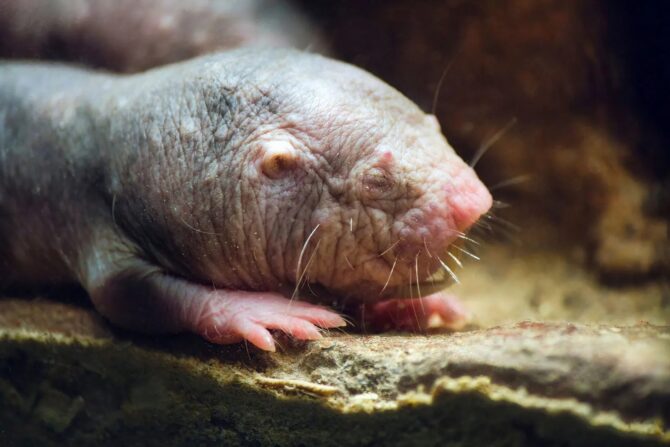
- Habitat: Underground tunnels in East Africa
- Diet: Roots and tubers
A truly unique mammal, the Naked Mole Rat is hairless, giving it its “naked” appearance. They live in large colonies underground, led by a single queen.
Their resistance to cancer and long lifespan, especially compared to other rodents, has made them a subject of scientific interest. Their unique societal structure and habits make them a wonder of the animal kingdom.
20. Nabarlek (Petrogale concinna)
- Habitat: Australian rocky outcrops
- Diet: Plants, fruits
A small kangaroo, the Nabarlek, also known as the Little Rock wallaby, hops around the rocky terrains of Australia. With their powerful legs, they navigate the treacherous cliffs and rocks with ease.
Their nocturnal nature means they are active during cooler nights, feeding on various plants and fruits. Their agility and adaptability have ensured their survival in challenging terrains.
21. New Zealand Kea (Nestor notabilis)
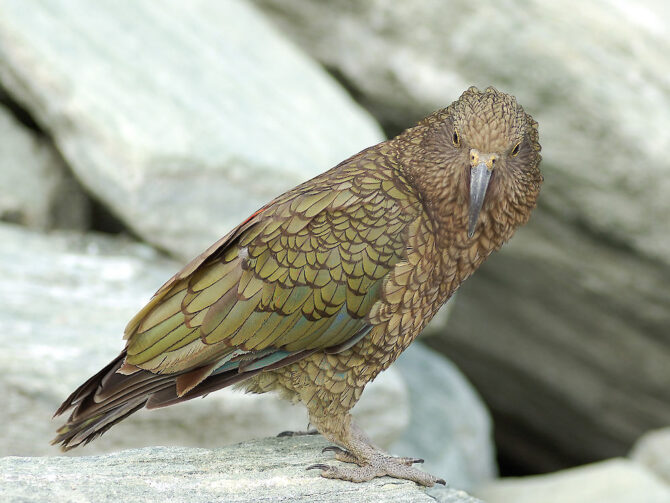
- Habitat: New Zealand alpine regions
- Diet: Omnivorous – fruits, insects, carrion
The New Zealand Kea, often referred to simply as Kea, is a large, intelligent parrot known for its curious nature and bright green plumage. They are the world’s only alpine parrot, perfectly adapted to the cold, mountainous regions they call home.
What’s fascinating about Keas is their playful behavior, which can sometimes get them into trouble with humans. They’ve been known to peck at parked cars, pull windshield wipers, and steal items from unsuspecting tourists.
22. Nightcrawler (Various species)

- Habitat: Soil worldwide
- Diet: Organic matter
Nightcrawlers, large earthworms that come out at night, are an essential part of many terrestrial ecosystems. They aerate the soil by creating tunnels, facilitating water flow, and breaking down organic matter.
Fishermen cherish them as prime bait, but their role in maintaining soil health is truly unparalleled. Their presence indicates a fertile and well-balanced soil environment.
23. Nautilus (Nautilus pompilius)

- Habitat: Deep tropical oceans
- Diet: Crustaceans and marine detritus
With their beautifully chambered shells and tentacles, nautiluses are often considered ‘living fossils’ due to their resemblance to ancient cephalopods. These marine creatures inhabit the deep ocean and have an exceptional buoyancy control system.
The spiral structure of their shells has inspired poets, artists, and scientists alike. As they grow, nautiluses add more chambers to their shells, making them a living record of their growth.
24. Nurse Shark (Ginglymostoma cirratum)
- Habitat: Tropical ocean floors
- Diet: Crustaceans, mollusks, and small fish
Nurse sharks, with their broad heads and small mouths, are one of the more docile shark species. They are nocturnal hunters, often resting during the day in groups on the ocean floor.
They have barbels, or whisker-like structures, which they use to detect prey in the sand. While not typically aggressive, they will defend themselves if provoked.
25. Northern Mockingbird (Mimus polyglottos)
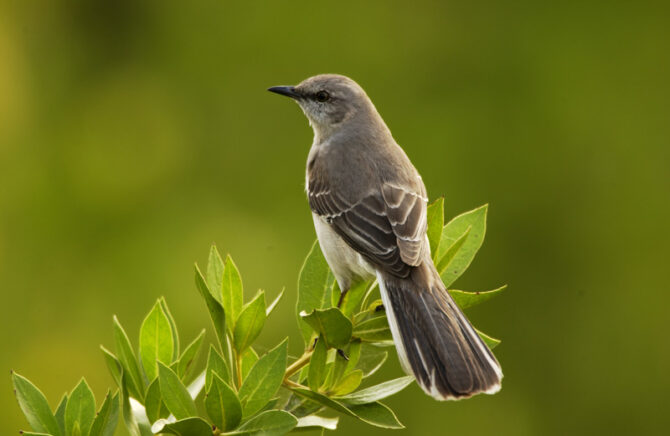
- Habitat: North America
- Diet: Insects, berries
Known for their incredible vocal abilities, the Northern Mockingbird can imitate a variety of sounds, from other birds’ songs to mechanical noises. This bird holds the title of the state bird for several US states due to its widespread admiration.
Not only are they master mimics, but they’re also very territorial, especially when nesting. They’ve been known to dive-bomb intruders, including humans, who get too close to their nests.
26. Nyala (Tragelaphus angasii)
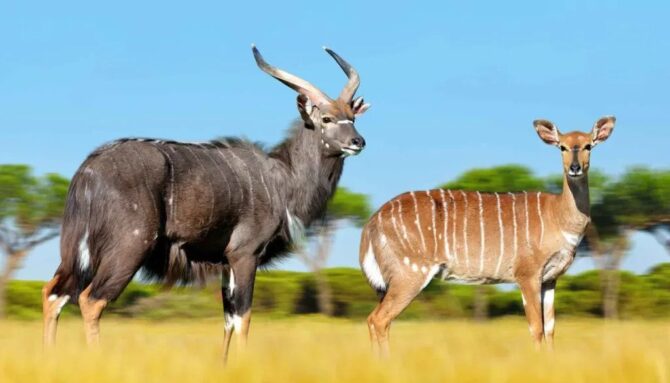
- Habitat: Southern African woodlands
- Diet: Grasses, leaves, fruits
The Nyala is a spiral-horned antelope, with males and females looking distinctly different. While males have spiral horns and a shaggy coat, females are hornless with a more reddish-brown coat. Males often engage in slow, ritualized fights that involve horn-wrestling.
They’re generally shy animals, preferring the safety of dense brush to avoid potential predators.
27. Nicator (Various species)
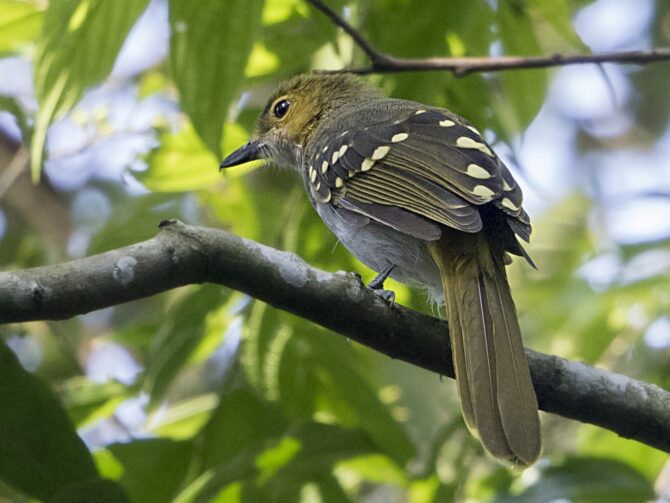
- Habitat: African forests and woodlands
- Diet: Insects
Nicators are vibrant songbirds native to Africa. Their melodious calls resonate through the African forests, making them a favorite among birdwatchers. They feed primarily on insects and have a unique foraging method, often catching their prey mid-air.
Their name is derived from the Greek word ‘nikator’, meaning ‘conqueror’ – a nod to their assertive personalities.
28. Nase (Chondrostoma nasus)
- Habitat: European freshwater rivers
- Diet: Algae
Sporting a sleek silver body, the Nase is a common sight in European rivers. They play an essential role in maintaining water quality by consuming vast amounts of algae.
Their unique downward-facing mouths are a perfect evolutionary adaptation to feed on riverbed algae. As a popular game fish, they are sought after by anglers across Europe.
29. New Guinea Singing Dog (Canis lupus dingo)

- Habitat: Highlands of New Guinea
- Diet: Small mammals, birds
The New Guinea Singing Dog is named for its unique vocalization. With a melodious and haunting howl, they can produce a range of sounds unparalleled by other canids.
They are exceptionally agile and have a wild nature. Although they share many traits with domestic dogs, their behavior and vocalizations make them a distinct and fascinating canine species.
30. Neotropic Otter (Lontra longicaudis)
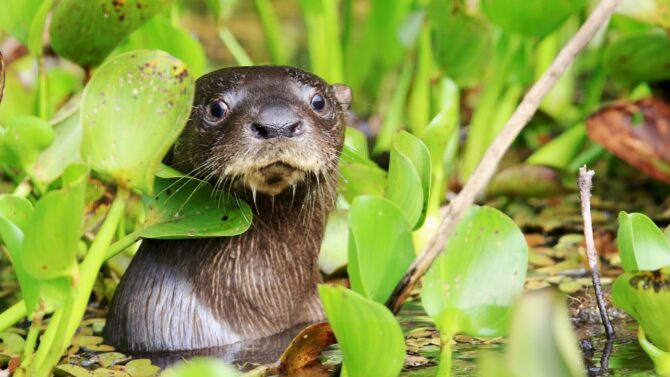
- Habitat: Freshwater bodies in Central and South America
- Diet: Fish, crustaceans, and small amphibians
The Neotropic Otter is a freshwater species indigenous to Central and South America. With their sleek, streamlined bodies and agile movements, they are proficient swimmers and hunters.
These otters exhibit a solitary nature, marking territories with a musky scent. Their long, slender tails, which can be as long as their bodies, aid in steering while swimming, showcasing the wonders of evolutionary design.
31. Northern Lynx (Lynx lynx)
- Habitat: Forests of Eurasia
- Diet: Hares, deer, birds
With tufted ears and a thick fur coat, the Northern Lynx is a majestic feline adapted to cold climates. Their broad paws act like snowshoes, enabling them to move effortlessly through snowy terrains.
Primarily solitary hunters, these lynxes rely on their keen eyesight and hearing to locate and stalk prey. Their beautiful fur, unfortunately, makes them a target for poaching, leading to conservation concerns in some regions.
32. New Caledonian Crow (Corvus moneduloides)
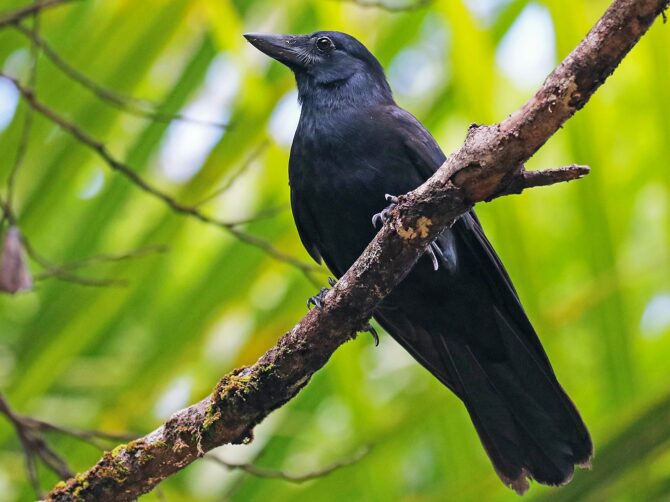
- Habitat: New Caledonia
- Diet: Omnivorous – insects, fruits, seeds
The New Caledonian Crow is renowned for its extraordinary intelligence. These crows have the astonishing ability to use tools – from using sticks to extract insects from tree barks to crafting complex tools from leaves.
Studies have shown that their cognitive abilities rival those of some primates. Their tool-making prowess is a testament to the marvels of avian intelligence.
33. Nicator Gularis (Western Nicator)
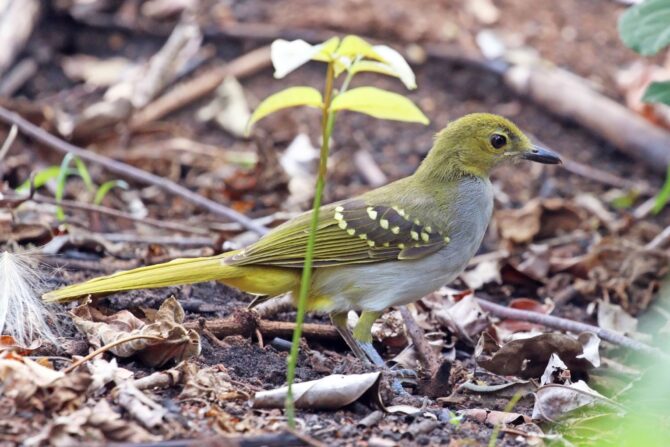
- Habitat: African forests
- Diet: Insects
Nicator Gularis, or the Western Nicator, is a songbird found in the forests of West and Central Africa. Their melodious calls are a delightful auditory treat for anyone wandering through their habitats.
Beyond their enchanting songs, their bright eyes and contrasting feather colors make them a visual delight as well. Observing these birds is a true joy for birdwatchers and nature enthusiasts alike.
34. Nalolo (Pseudotolithus elongatus)

- Habitat: Eastern Atlantic Ocean
- Diet: Crustaceans, smaller fish
The Nalolo, commonly found along the coast of West Africa, is a species of croaker fish. Recognizable by their elongated bodies and silver scales, they frequent sandy or muddy ocean floors.
Fishermen often catch Nalolos for their tender meat. Overfishing, however, poses a potential threat to their populations, emphasizing the need for sustainable fishing practices.
35. Nicator Virens (Eastern Nicator)
- Habitat: African forests
- Diet: Insects
A cousin of the Western Nicator, the Eastern Nicator graces the forests of East Africa. Just as melodious, they weave a symphony with their calls, creating an atmospheric backdrop in their habitats.
Their diet primarily consists of insects, which they skillfully catch mid-flight or pluck from foliage. Their vibrant personalities and lovely calls make them a centerpiece of East African avifauna.
36. New Zealand Falcon (Falco novaeseelandiae)
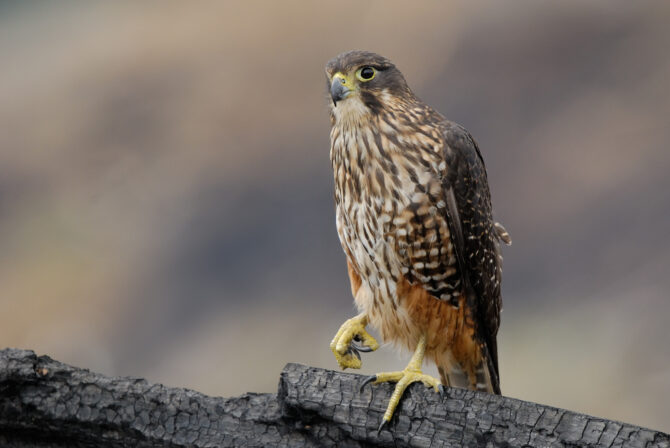
- Habitat: New Zealand forests and grasslands
- Diet: Birds, insects, small mammals
Also known as the Kārearea, the New Zealand Falcon is a bird of prey with striking features. With their sharp talons and keen eyesight, they are formidable hunters, often capturing prey mid-air.
This raptor is an iconic figure in Maori culture and is considered a taonga, or treasure, reflecting its importance in New Zealand’s natural and cultural heritage.
37. Nilgai (Boselaphus tragocamelus)
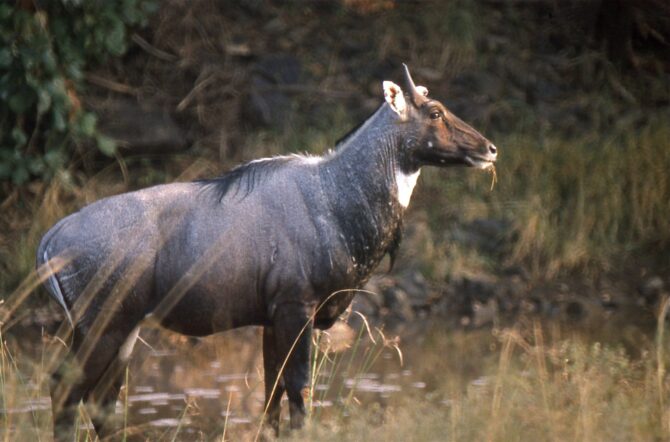
- Habitat: Indian plains and low hills
- Diet: Grass, fruits, and flowers
The Nilgai, or blue bull, is the largest Asian antelope. Males have a blue-grey coat, while females are brown. Named for its bluish tint (‘Nil’ means blue in Hindi), the Nilgai roams the plains and low hills of India.
These antelopes have a timid nature and are often seen in groups. Their graceful stature and unique coloration make them a notable species in the Indian subcontinent.
38. Nightingale (Luscinia megarhynchos)
- Habitat: Europe and Asia
- Diet: Insects
Synonymous with romantic poems and tales, Nightingale’s song is legendary. These small birds have an incredibly powerful and varied song, which they often sing throughout the night during mating seasons.
While their brown plumage might seem unremarkable, their exceptional vocal talents make them one of the most celebrated birds in literature and music.
39. Numbat (Myrmecobius fasciatus)
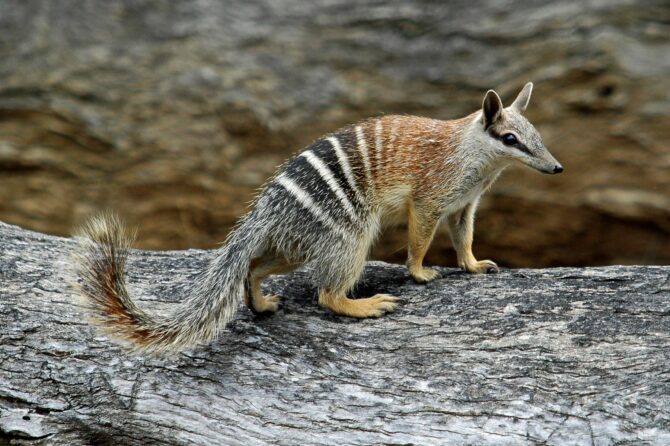
- Habitat: Western Australian woodlands
- Diet: Termites
With a colorful striped back and a long, sticky tongue, the Numbat is a peculiar and delightful marsupial. This termite-eating creature stands out with its anteater-like diet, though it’s much smaller and more vibrant in appearance.
Numbats have a keen sense of smell to detect termite mounds. Their populations, however, are under threat due to habitat loss and introduced predators, making conservation efforts vital.
40. Nutria (Myocastor coypus)

- Habitat: Wetlands, rivers, and lakes
- Diet: Aquatic plants
Also known as coypu, the Nutria is a large, semi-aquatic rodent native to South America. It has webbed feet and strong incisors, which are orange in color. The Nutria was introduced to various parts of the world for its fur but has since become an invasive species in many regions.
Their burrowing activities can lead to erosion, posing challenges to the local ecosystem. Nonetheless, they remain fascinating creatures with their unique appearance and behaviors.
41. Northern Fur Seal (Callorhinus ursinus)
-
- Habitat: Northern Pacific Ocean
- Diet: Fish and squid
The Northern Fur Seal is known for its dense fur, which protects it from the chilly waters of the Northern Pacific. These seals breed on rocky islands and have an impressive ability to stay submerged for long periods.
Historically hunted for their fur, their populations faced significant decline. Today, conservation efforts have helped in their recovery, though some challenges remain.
42. Neddicky (Cisticola fulvicapilla)

- Habitat: Grasslands and scrublands of Africa
- Diet: Insects
The Neddicky, a small bird species, is known for its distinctive “pu-pu-pu” call. These birds are often seen darting through grasslands, catching insects mid-air, or plucking them off plants.
Their brown plumage helps them blend seamlessly with their environment, making them difficult to spot but a joy to watch once discovered.
43. Northern Goshawk (Accipiter gentilis)
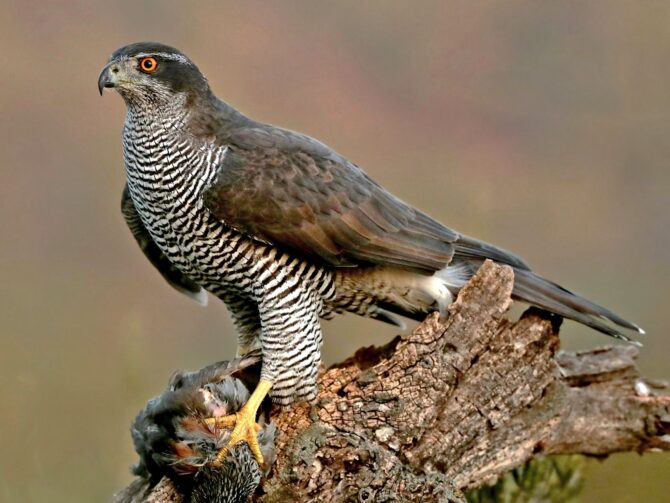
- Habitat: Forests of the Northern Hemisphere
- Diet: Birds and mammals
A fierce and powerful raptor, the Northern Goshawk, is a master of the skies. With sharp talons and swift flight, it preys on birds and small mammals, often catching them mid-air.
Their piercing eyes and impressive agility make them one of the top predators in their habitat. Birdwatchers and ornithologists consider them a prized sighting due to their elusive nature.
44. Nilssonia (Genus of freshwater turtles)

- Habitat: Freshwater bodies in South Asia
- Diet: Aquatic plants, fish, and crustaceans
The Nilssonia turtles are a group of freshwater turtles found in South Asia. These turtles have broad, flattened shells and webbed feet, making them proficient swimmers.
Facing threats from habitat loss and hunting, these turtles are now the focus of various conservation initiatives aimed at ensuring their survival.
45. Nightfish (Bostockia porosa)
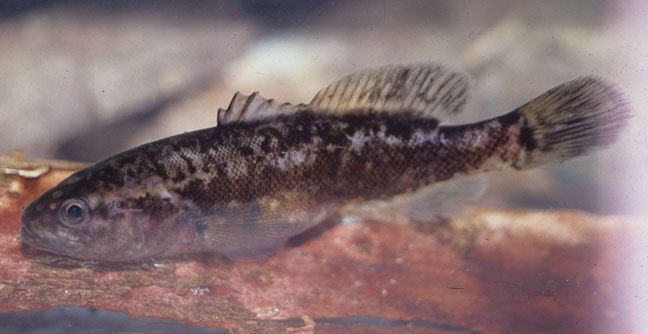
- Habitat: Freshwater rivers and lakes in Western Australia
- Diet: Smaller fish and aquatic invertebrates
Concluding our list is the Nightfish, a species found exclusively in Western Australia. This nocturnal fish has a robust body and a distinctive appearance, characterized by its large pectoral fins and bulbous eyes.
Though not as well-known as some others on this list, the Nightfish’s uniqueness and regional specificity make it a valuable inclusion.
Closing Thoughts
And there we have it – a dive into the diverse and dazzling array of creatures that start with the letter ‘N.’ Our planet is home to a cornucopia of species, each more intriguing than the next.
From the skies to the seas, from the vast plains to dense forests, life finds a way to flourish in myriad forms. As we close this journey, let’s take a moment to appreciate the wonders of nature and pledge to protect and preserve it for generations to come.






